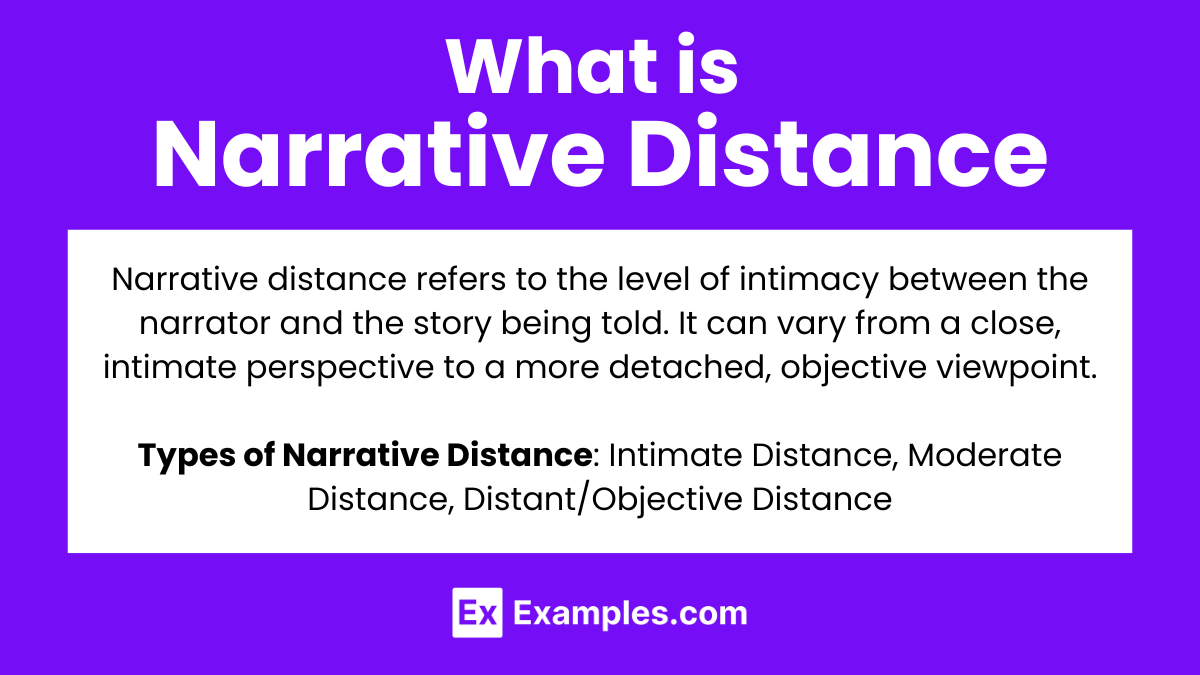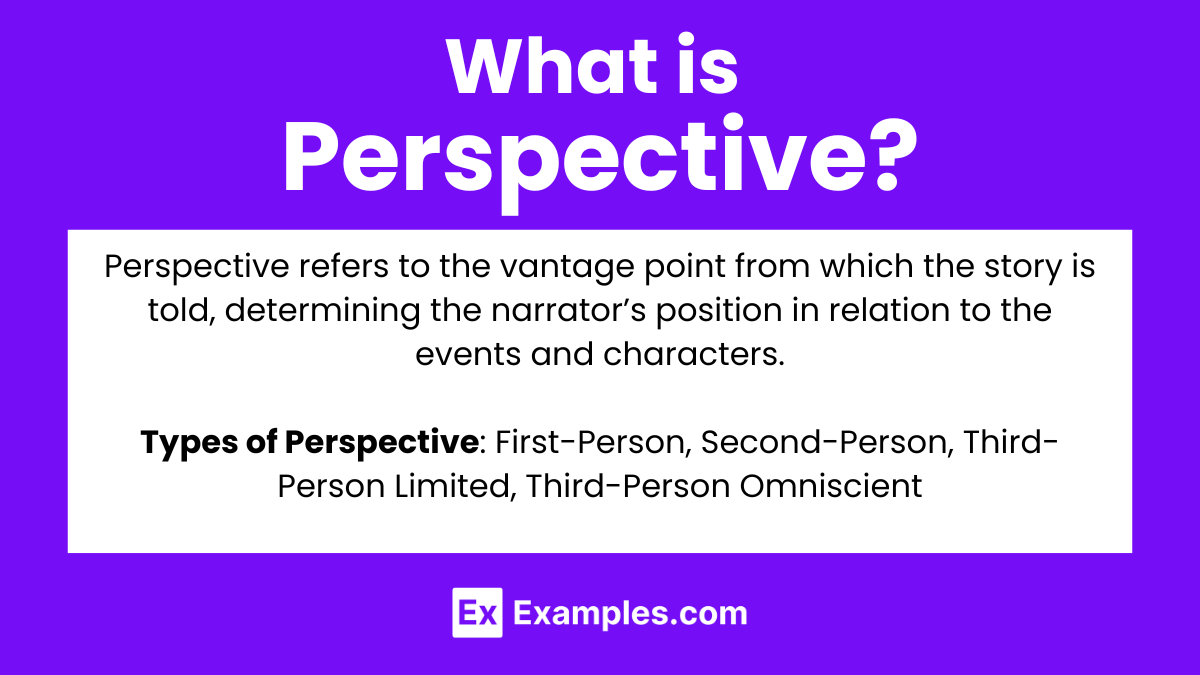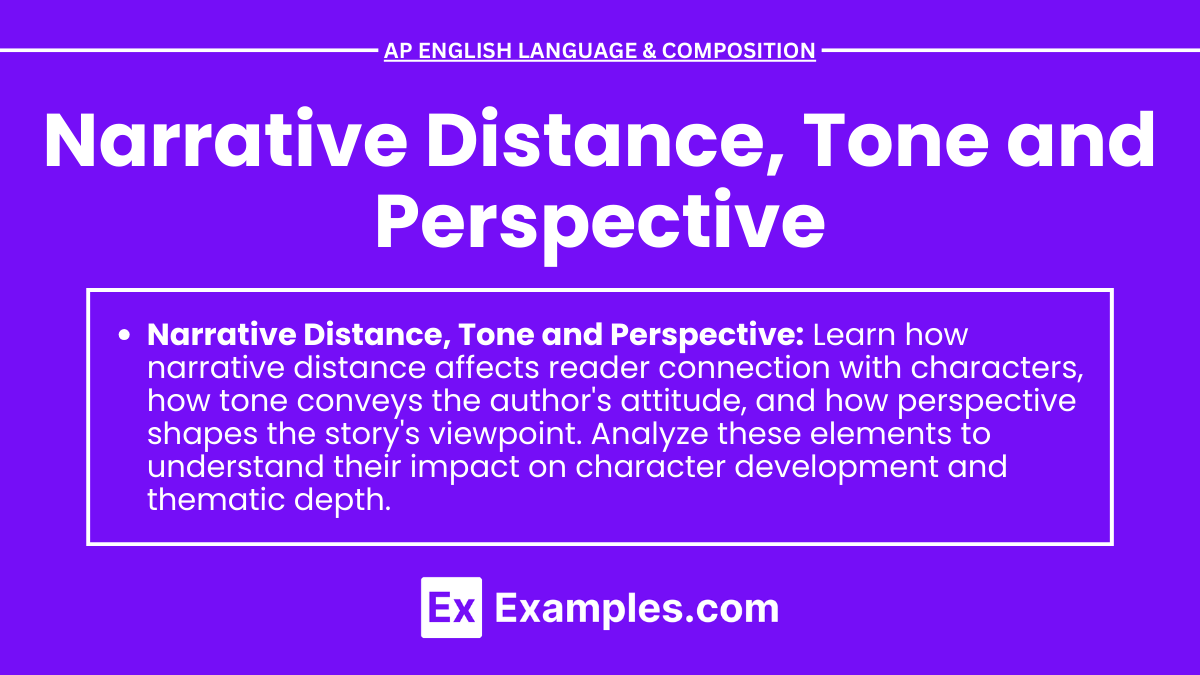In AP English Language and Composition, mastering the nuances of narrative distance, tone, and perspective is essential for crafting insightful analyses and compelling arguments. These elements, when understood and utilized effectively, enhance the depth and clarity of both rhetorical sentences and cumulative sentences, enriching argumentative speech and argumentative writing. By exploring how different narrative techniques shape a story, students can develop more sophisticated interpretations and articulate their thoughts with precision, ultimately leading to more persuasive and impactful essays.
Learning Objectives
The learning objectives for mastering narrative distance, tone, and perspective in AP English Language and Composition include the ability to construct cumulative sentences that build depth and detail, write explanatory essays that clearly elucidate narrative techniques, and compose expository essays that explore their effects. Students will learn to craft precise rhetorical sentences to convey complex ideas, develop coherent and insightful final thesis statements, and apply critical thinking to analyze and interpret these narrative elements, connecting them to broader themes and arguments in their writing.
Narrative Distance

Definition: Narrative distance refers to the level of intimacy between the narrator and the story being told. It can vary from a close, intimate perspective to a more detached, objective viewpoint.
Types of Narrative Distance:
- Intimate Distance: The narrator provides a close, personal view of the characters’ thoughts and emotions. This often involves first-person or close third-person narration.
- Moderate Distance: The narrator has some level of separation from the characters but still provides insight into their thoughts and feelings. Often used in third-person limited narration.
- Distant/Objective Distance: The narrator maintains a significant distance from the characters, offering little to no insight into their inner lives. This is common in third-person objective narration.
Purpose:
- Character Development: Varying narrative distance helps in developing characters by providing different levels of insight into their thoughts and actions.
- Reader Engagement: A closer narrative distance can create a stronger emotional connection between the reader and the characters.
- Control of Information: Authors use narrative distance to control the amount of information revealed to the reader, which can build suspense or provide clarity.
Analyzing Narrative Distance:
- Identify the Narrator: Determine who is telling the story and their relationship to the characters.
- Evaluate the Level of Intimacy: Assess how closely the narrator follows the characters’ thoughts and actions.
- Consider the Impact: Analyze how the chosen narrative distance affects the reader’s understanding and engagement with the story.
Tone

Definition: Tone refers to the author’s attitude toward the subject matter or the audience, conveyed through stylistic choices in writing.
Types of Tone:
- Formal: Uses sophisticated language and a serious attitude.
- Informal: More conversational and relaxed, often using colloquial language.
- Serious: Treats the subject with gravity and respect.
- Humorous: Light-hearted and intended to entertain or amuse.
- Ironic: Conveys a meaning opposite to the literal interpretation, often to highlight contradictions or criticize.
Purpose:
- Express Author’s Attitude: Tone reveals how the author feels about the subject or characters.
- Influence Reader’s Perception: The tone can shape how readers perceive the story or characters.
- Establish Mood: Tone contributes to the overall mood of the narrative, influencing the reader’s emotional response.
Analyzing Tone:
- Word Choice: Examine the diction used by the author and how it contributes to the tone.
- Sentence Structure: Analyze how the syntax and sentence length affect the tone.
- Context: Consider the broader context of the narrative and how the tone aligns with the themes and characters.
Perspective

Definition: Perspective refers to the vantage point from which the story is told, determining the narrator’s position in relation to the events and characters.
Types of Perspective:
- First-Person: The narrator is a character within the story, using “I” or “we.”
- Second-Person: The narrator addresses the reader directly as “you,” immersing them in the narrative.
- Third-Person Limited: The narrator is outside the story but provides insight into the thoughts and feelings of one character.
- Third-Person Omniscient: The narrator knows all the thoughts and feelings of all characters, offering a god-like perspective.
Purpose:
- Control Information: Perspective controls what information is available to the reader and how it is presented.
- Shape Reader’s Understanding: Different perspectives provide varying levels of insight into characters and events, shaping the reader’s interpretation.
- Create Bias: The chosen perspective can introduce bias, influencing the reader’s alignment with certain characters or viewpoints.
Analyzing Perspective:
- Identify the Narrative Point of View: Determine whether the narration is first-person, second-person, or third-person.
- Assess the Scope of Knowledge: Evaluate how much the narrator knows about the thoughts and feelings of the characters.
- Consider the Effect on the Story: Analyze how the perspective shapes the reader’s understanding and engagement with the narrative.


